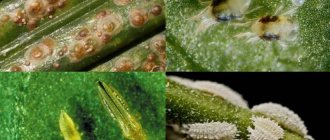5
(1)
Speedwell filamentous or filamentous is a plant with soft blue or white small flowers, which often greatly bothers owners of summer cottages. Indeed, it is aggressive in its vitality and almost invincible - it quickly clogs not only paths, lawns, flower beds, but also vegetable gardens. On the one hand, this vitality and indomitable energy can be put to good use, on the other hand, it greatly interferes with useful plantings and is considered one of the most annoying weeds. In this article we will tell you how veronica filamentous is destroyed on the lawn in various ways.
Features of filamentous speedwell
It has thin, creeping, easily rooted shoots, which is why it is considered an aggressor plant. She does not like wet soil, but will survive well both on it and on dry soil during the hot summer. When frozen, it is easily restored.
Veronica filamentous or filamentous - this is what this plant looks like
The description and characteristics of Veronica filamentous are presented in the table:
| Characteristics | Description |
| Plant type | herbaceous |
| Family | Norichnikovye |
| Decorativeness | decorative flowering, ground cover |
| Soils | fertile, moderately fertile, poor, drained, sandy loam, waterlogged, clayey, loamy |
| Soil moisture | dry, wet, moderately wet |
| Lifespan | annual, biennial, perennial |
| Illumination | partial shade, direct sunlight |
| Reproduction | seeds, cuttings, division |
| Boarding time | Spring Summer Autumn |
| Distribution area | Western and Southern Europe, Caucasus, Iran, Asia Minor |
If you do not get rid of Veronica filamentous in time, it can completely take over your garden. It is a low-growing plant with tiny, rounded leaves and charming flowers that close in bad weather. It's almost useless to fight her. She takes care of herself and easily wins the fight against other weeds.
If you want to get rid of it, then thread-like speedwell can be removed from the site along with the thin top layer of soil, without leaving a single shoot. If it has not grown too much, it can be weeded by hand. As a last resort, you will have to resort to the use of selective herbicides.
However, it is so attractive in appearance that, for example, it can be planted among fruit trees and shrubs. Here it does not interfere with cultivated plants. But in the spring it decorates the earth with its color. Moreover, speedwell prevents the soil from compacting and drying out.
Description and characteristic features
A low perennial (up to 7 cm) covers the free area with a thick carpet woven from thin, easily rooted stems. Refers to ground cover species. Numerous small leaves have a rounded shape and a light green color.
Mass flowering is observed from late spring to mid-summer. The plant carpet is covered with blue and blue or white patches of small flowers, which open together in large numbers. Interestingly, in inclement weather the flowers are closed.
Veronica filamentous is undemanding to placement conditions. Preferring damp places with light shade, it can grow remarkably well both in full sun and in constant shade. It tolerates short-term dry weather disasters without problems.
When placed under fruit trees (apple, pear, cherry, blackthorn, various currant bushes), it exists on its own and protects its neighbors.
Thanks to the created carpet, Veronica filamentous maintains the moist state of the soil under its shoots, which is important for cultivated trees and shrubs. At the same time, it does not deplete the soil. Thus, the trees and bushes under which the growing speedwell filamentous vegetation is located are protected from drying out and compacting the soil
The herbaceous guest has also proven itself in use on alpine hills or for flower borders. However, there is a downside to good survivability.
Thus, the trees and bushes under which the growing speedwell filamentous vegetation is located are protected from drying out and compacting the soil. The herbaceous guest has also proven itself in use on alpine hills or for flower borders. However, there is a downside to good survivability.
If left uncontrolled, ornamental speedwell can turn into a feral, malicious weed - an aggressor for garden beds. To avoid such a situation, a little attention and effort is required: proper maintenance, restriction of free reproduction.
How to deal with Veronica filamentous on the lawn
Despite its “angelic” appearance, the delicate filamentous veronica is still a serious enemy of the lawn. Rapidly spreading, it is capable of killing lawn grasses, capturing more and more new areas. And at the same time, it reacts weakly to herbicide treatment.
How to deal with it? In what order? First of all, it is worth observing how the lawn grass itself feels, the types and varieties of which must be carefully selected. If there are voids and bald spots between the shoots, then the weed will definitely settle in them. Then you need to understand what the herbs need and what the weed prefers.
Subtleties of plant care
The Veronica plant is quite easy to grow: even a beginner can grow a healthy, strong flower in open ground. Read more about what measures Veronica needs to care for garden plants.
Veronica is rarely affected by pests
Watering and fertilizing regime
First of all, it is necessary to carefully monitor the condition of the soil in the area where the plant is grown: under no circumstances should it dry out (dry soil is practically death for Veronica). During periods of drought, the plant should be watered very generously: do not allow the soil to dry out. When the first branches appear on the plant, watering should be stopped, and after the last ones bloom, the tops of the veronica should be trimmed.
As for fertilizers, Veronica certainly needs them, but fertilizing should not be too frequent: it is enough to apply fertilizer to each bush of the plant with the onset of the growing season, and continue fertilizing only at the end of spring. If you live in a region where winters are quite severe, it is advisable to also apply potassium fertilizers in the middle of summer: this will help the plants withstand the cold.
Diseases and pests
Despite the fact that various insects always hover near the plant, attracted by its fragrant pollen (bees, butterflies, etc.), Veronica is resistant to this kind of “encroachment.”
The plant is slightly susceptible to various diseases and pests. The only exceptions are some fungal diseases such as powdery mildew and gray rot. You can get rid of these diseases using either chemicals, such as Oxychom or copper sulfate, or biological analogues, which will be completely safe for animals and humans.
Sometimes aphids can “visit” Veronica growing in the garden. If there is not too much of it, there is no need to worry: the plant is able to cope with the pest on its own.
Veronica in landscape design
How to fight Veronica filamentous with herbicides
Gardeners often make mistakes: they treat weeds at the wrong period of development, select the wrong concentration or time of day. Weeds are most sensitive to herbicides in the spring growth phase. Resistance to them increases sharply during flowering and seed ripening - at this time, herbicides have no effect on speedwell, like other weeds.
However, Veronica is already quite resistant to most drugs. At first glance, the first treatment has practically no effect on it. But in fact, its growth stops. And with subsequent treatments, its amount is significantly reduced.
This is what weed flowers look like close up
If you have just begun to develop the area, then before sowing lawn grass, glyphosate-based products are very effective in controlling speedwell and its extermination - Tornado, Hurricane, Round-Dup, etc. Later, when the lawn is already in the stage of active growth, preparations are used Lontrel, Dicamba, Lintur, which also stop the growth of the weed. Veronica is most sensitive to herbicides during the period of bud formation - then the treatment is very effective.
When working with herbicides, it is important to act strictly in accordance with the recommendations for the concentration of drugs and their consumption over a certain area. If the instructions indicate that one ampoule should be dissolved in 3 liters of water and treated with the resulting solution on 1 hundred square meters, then you should not try to spray 2 or even 3 hundred square meters with this amount. On the other hand, you shouldn’t make a stronger solution in the hope that the effect will come faster. All deviations from the rules are fraught with unpredictable consequences.
The main thing is that your lawn grows in normal conditions, that it is properly cared for, and that the grass is most suitable for your site. Then, in order to get rid of “uninvited guests” - filamentous speedwell and other weeds, one or two hand weedings at an early stage of their appearance will be enough for you.
Reproduction methods
To grow filamentous veronica in your garden plot, it is not necessary to purchase seeds and young shoots at a flower market or in a specialized store. It is not difficult to meet this representative of the flora in the natural environment, not far from home: in the forest, in a meadow, along the side of the road. It reproduces in three ways .
Seeds
Seeds are subject to mandatory stratification, the process of which depends on the time of sowing. You can plant a herbaceous flower in two steps. Each gardener chooses the most convenient option for himself.
- Autumn sowing. Seeds undergo natural stratification during winter. The entire planting process is extremely simple. An area is selected and cleared of uninvited guests (weeds). The earth is brought into a state of lushness, loosened and leveled. Sowing of seed material is carried out in holes or furrows to a depth of two centimeters. The seeds must be sprinkled with soil, peat or humus on top. In spring, a neglected area will delight with friendly shoots.
- Spring sowing. For seeds, an artificial temperature difference is created in advance, which is required for good germination. Crops are placed in a container with sand or drainage substrate, lightly covered with the substrate. The surface is carefully moistened (preferably sprayed with a spray bottle). A mini-greenhouse is equipped: the container is covered with a film with small holes made in it to allow air to enter the soil. For a month, this structure is placed in cool conditions (temperature at +5°).
“Overwintered” crops are ready for planting either directly in open ground or for growing through seedlings. For seedlings, the mini-greenhouse is placed in a warm, well-lit place. The first shoots appear after 14 days. The film is removed. Further care continues as usual with the seedling method.
Dividing the bush
This is the easiest way to propagate filamentous veronica.
The guaranteed result is achieved from any initial instance (if it is viable). It is advisable to carry out the procedure before the time of flowering, or after its completion. Selected plant specimens are dug out of the ground. With care, the roots are divided into parts with the presence of growth points at each. The separated pieces are placed in moist peat or sandy soil under cover. Film, glass or plastic containers , and a small greenhouse are suitable. After a week and a half, after the first adaptation period, the shelter is removed.
By cuttings
Propagation by cuttings is carried out in the summer. The material for planting is prepared as follows:
- Young healthy stems are selected.
- Cut into pieces no more than 10 centimeters.
- The tops and inflorescences must be removed.
During the formation of roots, the cuttings are buried two centimeters into a moist substrate (the composition used is of the same properties as for bush division).
The container is covered to create a certain microclimate. Care consists of ventilation and watering according to the established schedule. The appearance of young leaves allows you to open the shoots and replant them in the garden or flowerbed. Rooting of cuttings can occur when placed in a vessel with plain water. Such individuals are transferred to open ground upon completion of the formation of the first stage of development of the root system (the appearance of root growths). Most often, after standing for two weeks on the windowsill .
Why do weeds appear on the lawn?
Veronica filamentous, like other creeping weeds, reproduces well on a lawn with thinned grass. To determine the level of activity of these weeds, before mowing, it is recommended to comb the lawns for some time, lifting the lashes with a rake. This will help to capture weeds during mowing, while simultaneously stimulating the tillering of lawn grass.
Weeds on the lawn are quite common. This problem occurs for several reasons:
- due to improper preparation of the area;
- due to illiterate selection of lawn mixtures;
- due to poor care.
Removing weeds is the number one task for every high-quality lawn. Indeed, when weeds appear, its decorative appearance significantly deteriorates. Lawn grasses lose their characteristic bright green color, become depleted, and begin to grow poorly. In the absence of proper care on a neglected lawn, weeds quickly crowd out delicate lawn grasses, so the fight against them must be carried out continuously.
The main source of weeds is the soil in which weed seeds are hidden. Why is removing weeds from your lawn so important, and how can they harm your lawn? The main thing is that weeds spoil the decorative appearance of the lawn, making it unkempt and unkempt. In addition, weeds draw moisture and nutrients onto themselves, preventing lawn grasses from developing normally. Because of this, lawn coverings degenerate and die.
Tip #2. It is also necessary to fight weeds on the lawn to prevent the development of various diseases on it, which are sometimes very difficult, if not impossible, to cure.
Weeds must be removed from the lawn, because they can bring a lot of different diseases and pests to
the lawn. Weeds can lurk in the soil for many years without losing their germination capacity, and they germinate when placed in favorable conditions. They quickly begin to make themselves felt if, for example, organic fertilizers get into the soil during the creation of a lawn. After all, birds can also carry weed seeds onto the site.
Description and characteristic features
A low perennial (up to 7 cm) covers the free area with a thick carpet woven from thin, easily rooted stems. Refers to ground cover species. Numerous small leaves have a rounded shape and a light green color.
Mass flowering is observed from late spring to mid-summer. The plant carpet is covered with blue and blue or white patches of small flowers, which open together in large numbers. Interestingly, in inclement weather the flowers are closed.
Veronica filamentous is undemanding to placement conditions. Preferring damp places with light shade, it can grow remarkably well both in full sun and in constant shade. It tolerates short-term dry weather disasters without problems.
When placed under fruit trees (apple, pear, cherry, blackthorn, various currant bushes), it exists on its own and protects its neighbors.
Thanks to the created carpet, Veronica filamentous maintains the moist state of the soil under its shoots, which is important for cultivated trees and shrubs. At the same time, it does not deplete the soil
Thus, the trees and bushes under which the growing speedwell filamentous vegetation is located are protected from drying out and compacting the soil. The herbaceous guest has also proven itself in use on alpine hills or for flower borders. However, there is a downside to good survivability.
If left uncontrolled, ornamental speedwell can turn into a feral, malicious weed - an aggressor for garden beds. To avoid such a situation, a little attention and effort is required: proper maintenance, restriction of free reproduction.
Agrotechnical methods of weed control
The most effective method of controlling weeds on lawns is hand weeding. The first time it should be done about 20 days after you sowed the lawn, when the root system of the weeds is still quite poorly developed. If perennial weeds appear on the lawn - dandelion, field sow thistle, etc. - they are dug up along with the root system.
Perennials are the most durable weeds. They are dug out with a narrow scoop or knife. In this case, the root systems of the weeds are buried as deep as possible. Manual weeding is a rather labor-intensive process, but it often turns out to be the most effective. After this, the damaged soil must be thoroughly compacted and watered.
Regular lawn mowing is also an effective way to get rid of weeds on lawns. For example, annual weeds can be completely destroyed with regular lawn mowing.
Chemical methods of weed control
Chemicals produced to kill weeds are called herbicides. Today, selective action drugs (Lontrel-300, etc.) are used to control weeds on lawns. Their peculiarity is that they have a selective mechanism of action that suppresses weed growth, while the lawn remains intact and unharmed.
Tip #3. You can completely clear your lawn of weeds, in particular its above-ground part and root systems, by using such a popular drug as Magnum.
Chemicals are used in warm, windless weather when the grass is dry. This enhances processing efficiency. Before using any medications, you need to carefully read the instructions. After using herbicides, do not rush to mow the lawn - you can resume this procedure and do it regularly only a few days after spraying. If necessary, re-processing must be done after some time.
However, many people use this weed to decorate their garden plots, instead of large carpet flower beds and even instead of the lawns themselves.
Seeds
The material is sown in late autumn. Flowering occurs 24 months after planting Veronica filamentous plants. In the case of spring sowing, seeds are amenable to stratification - a procedure that consists of creating an artificial temperature difference necessary for normal seed germination.
The process of growing a plant from seeds looks like this:
- Prepare a garden pot with drainage substrate.
- The seeds are laid out on the surface, sprinkled with a small amount of soil on top.
- The crops are sprayed with water. The top is covered with a film with small holes that allow the seeds to gain access to oxygen.
- The pot with planting material is placed in a cooler place in order to create special conditions for seed germination (for example, in the refrigerator), where it is kept for the next 3 weeks.
- After this period, the container is moved to a well-lit, warm place and wait for the first shoots, which begin to hatch 2 weeks after the temperature change. Care for seedlings using the standard method.
Veronica filamentous seeds are freely available and can be purchased at any specialized store.











